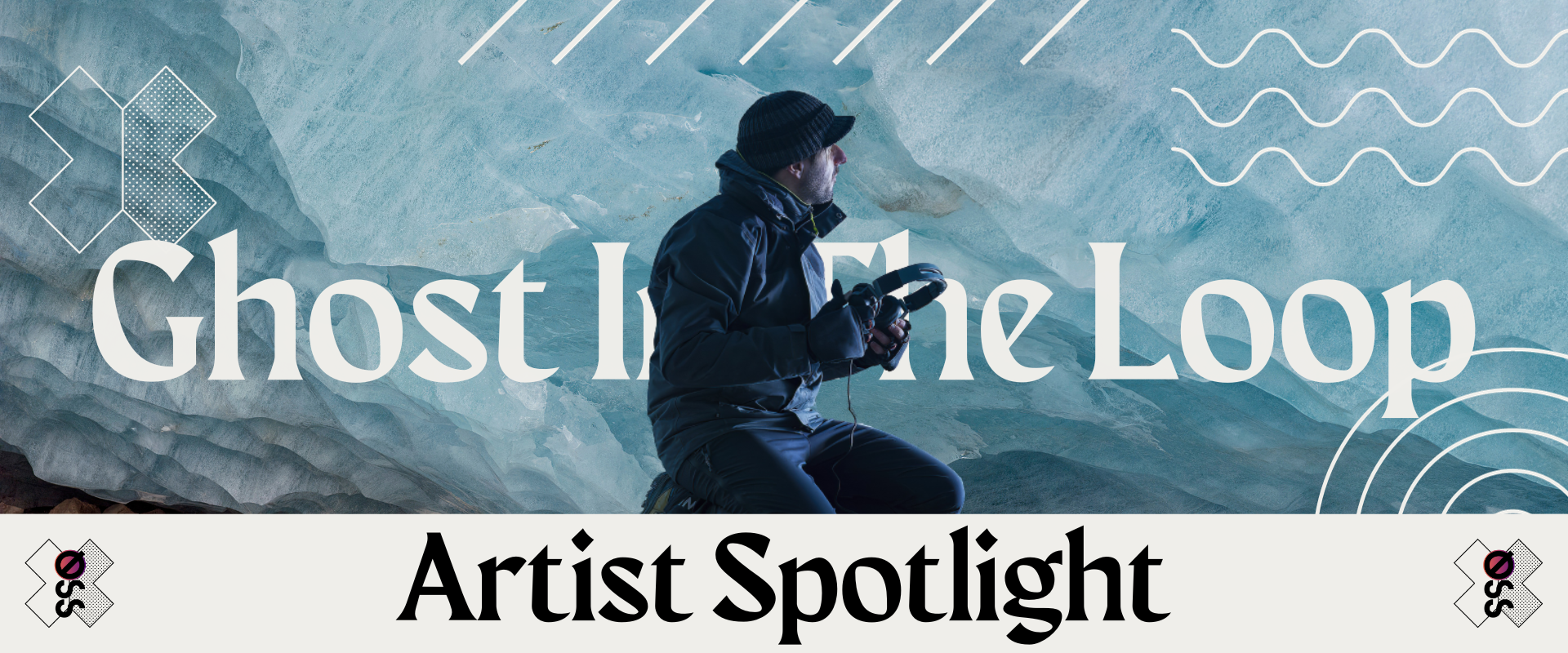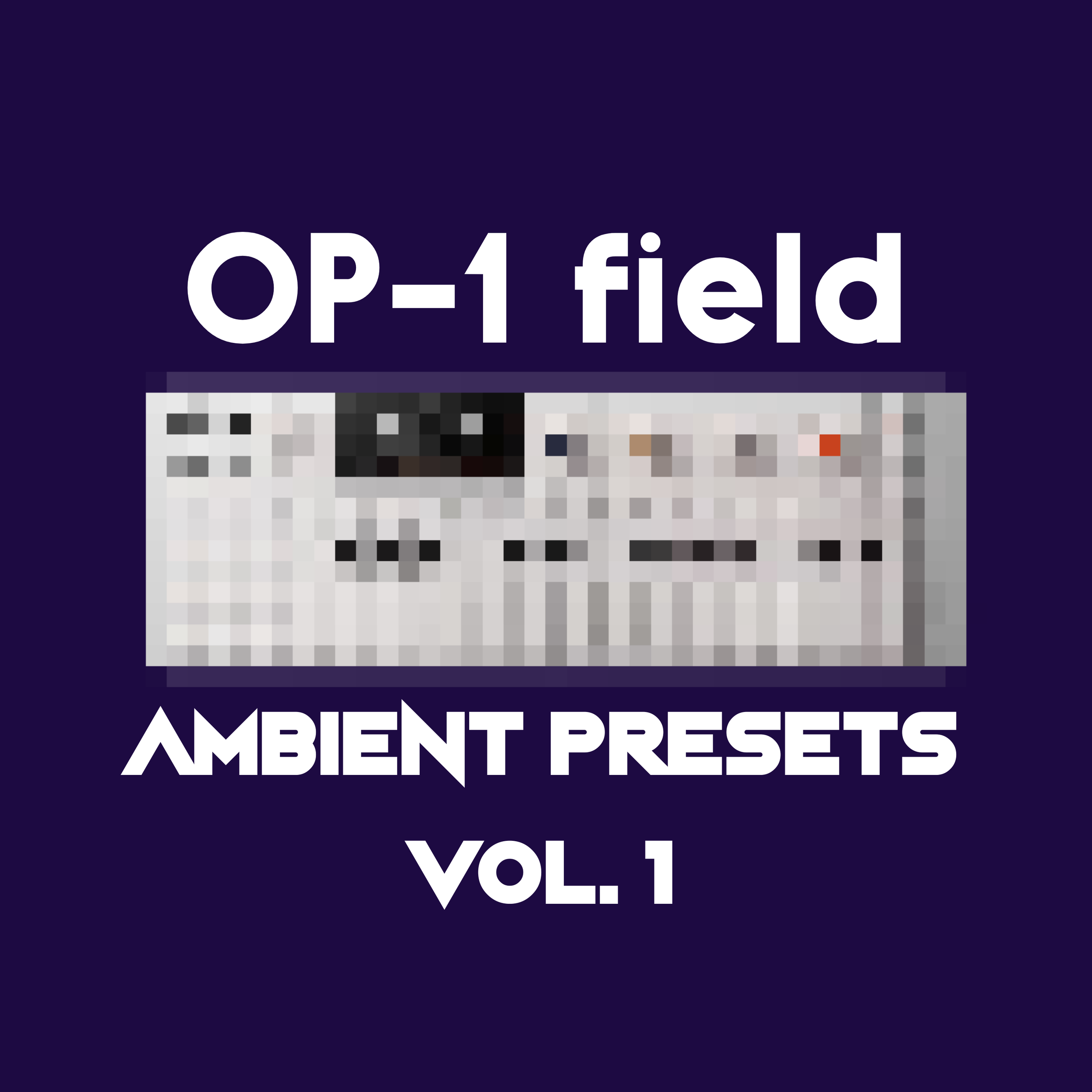Ghost In The Loop - Interview
Artist Spotlight: How it feels to record an ambient album inside a glacier?
Aurélien Buiron, also known as «Ghost In The Loop», is a multi-faceted artist specializing in the composition, performance, and production of electronic, ambient, and experimental music. For his latest record, he decided to travel to the Zinal Glacier in Switzerland and record a whole record out in the icy mountains and glaciers! The results are magnificent, both sonically and visually so we took the time to discuss and let Aurélien give us all the details of his extraordinary journey and experience.
Question: So Aurélien, tell us a bit more about your new record and your experience recording at the Zinal Glacier (Switzerland) at -7°C. How did you decide to do this project and why did you choose this, not so friendly, environment to record?
Answer: I've always been drawn to challenges, experimentation, and exploration. As soon as I began learning music production and electronic music during the March 2020 lockdown amid the COVID-19 pandemic, I developed a strong desire to record in extraordinary outdoor locations. To prepare for such endeavors, I started a series of live sessions on high-altitude orientation tables in my region whenever the pandemic situation allowed. These were essentially "crash-test" sessions to evaluate my equipment and my ability to improvise in an outdoor setting.
Once I felt comfortable and established my routine, I embarked on more serious and professional projects. After releasing my album "Cold Space Symmetry / Ambient Rework," which was recorded live at the IRAM millimeter observatory in the French Southern Alps at 2500 meters above sea level, I immediately began planning for the new album. Organizing such expeditions takes time, including physical preparation and studying the terrain and route. That's when I discovered the Zinal Glacier, which seemed relatively accessible and not too far from my location. After getting in touch with a local guide to clarify some uncertainties, everything fell into place for recording in this incredible natural place. I wanted to let the environment carry me and capture unique sounds through the ice. The combination of the breathtaking setting and the challenge of recording in a less-than-friendly environment was a compelling artistic and personal journey for me.
Q: What was the biggest challenge you had to face during your expedition?
A: Undoubtedly the extremely cold temperatures, ranging between -16 and -7 degrees Celsius, combined with the high level of moisture in the environment. This combination can be quite challenging, especially when dealing with electronic equipment. Even the slightest drop of water that lands on a synthesizer can quickly freeze, which actually happened towards the end of the recording session. Ice formed on my modular equipment and hindered some of the faders.
Another significant challenge was the access to the recording location. Carrying around 20 kilograms of equipment and instruments in a backpack, in such cold, snowy, and icy conditions, and traversing an 11-kilometer loop with an 800-meter elevation gain, added a whole new dimension to the project. It was a remarkable experience, but the physical demands and environmental conditions definitely posed some substantial challenges.
Q: How would you describe the sound of your upcoming album? How much did the environment influence your music?
A: The sound of my upcoming album “Le Chant de la Glace” can be described as a deliberate exploration of composition and arrangement beyond the boundaries of my previous work. In my previous album, "Cold Space Symmetry / Ambient Rework," I relied on live improvisations with electric guitar, effects/loopers, and synthesizers. I drew inspiration from the observatory site without directly interacting with it. However, for the recording at the glacier, I aimed to make the ice and its sounds a central element of the album.
To achieve this, I had to create a precise project specification, detailing how to record, which types of microphones to use, and how to utilize these sounds, whether in their raw form or synthesized live in my modular setup. Once the artistic direction was clearly defined, I conducted training sessions using hydrophones and contact microphones in natural reserves near my location during the winter. This helped confirm the feasibility of my initial concept.
What emerged from these training sessions was the emphasis on contrasts: the contrast between the organic sounds of the glacier and synthesized sounds, and between experimental and more melodic/structured elements. I wanted this album to be a true auditory and sensory journey, evoking surprise among listeners, with no two successive pieces of music resembling each other. The environment had a profound influence on the album, shaping its unique character and inspiring me to explore a wide spectrum of soundscapes and textures.
Q: You mentioned that this album is a poetic reminder of our responsibility to preserve nature and our planet. How do you think you’ve achieved that with your music?
A: I've aimed to achieve the message of environmental responsibility and the preservation of nature through the following musical approaches:
- Environmental Integration: By incorporating the sounds of the glacier, my music establishes a direct connection to the environment. This integration serves as a constant reminder of the natural world and its significance.
- Emotional Resonance: The music is crafted to evoke emotional responses in the listener. It seeks to awaken feelings of awe, wonder, and introspection, instilling a sense of responsibility for the environment's protection.
- Narrative and Symbolism: The album is structured to tell a story, drawing parallels between the sounds of nature and the human-made world.
- Symbolism and contrasts are used to emphasize the harmonious coexistence we should strive for in our relationship with the planet.
- Artistic Interpretation: My music interprets the voice of nature and portrays the impact of human actions. Instances like the synth freezing due to water droplets symbolize the disruptions our actions can cause in the natural world.
- Awareness and Education: Through the album, I hope to raise awareness about environmental concerns. Each composition serves as a call to action, urging individuals to contemplate their role in preserving the environment.
In conclusion, my music is not only a collection of sounds but a medium to convey a profound message. It invites listeners to reflect on their responsibility in safeguarding the planet, emphasizing the urgent need for environmental conservation and the interconnectedness of our world.
Q: Since we’re all about gear, tell us what gear you used to record this album. What was the most important piece of gear for this record?
A: I used a set of instruments that I frequently use in my home studio recording, but they played pivotal roles during the recording sessions at the glacier. Here's the gear I used:
Synthstrom Audible Deluge: This versatile instrument was at the heart of my setup, providing a range of sequencing capabilities that allowed me to create and manipulate the sonic landscapes.
Polyend Medusa: The Medusa contributed its unique synthesis capabilities and tactile interface, enabling me to craft a diverse sonic palette and experiment with textures.
Modular System (62 HP): My modular system played a significant role, offering modular synthesis capabilities that allowed me to process and shape the sounds captured at the glacier.
Collision Devices Noctural Effect Pedal: This effect pedal added depth and character to the sounds, enhancing the atmospheric qualities of the recordings and introducing novel textures.
Zoom H-6: The Zoom H-6 served as my portable recording device, enabling me to capture high-quality field recordings, including the sounds of the glacier and the surrounding environment.
Contact Microphones and Hydrophones: These specialized microphones were essential for capturing the raw, organic sounds of the glacier. They allowed me to get up close and personal with the ice, ensuring that I could convey its unique character in the recordings.
Q: Who is your biggest musical inspiration?
A: Lately, I have been heavily listening to Craven Faults, and I am fascinated by the balance in his tracks and the hypnotic repetitions that emanate from the music. One album that recently captivated me is "Tevenec" by MOLECULE (whom I deeply respect and admire, as he is the artist who inspired me to create music outdoors and push my limits). "Tevenec" is a true UFO, blending elements of Techno and pure sound experimentation. It is a resounding success, and I highly recommend discovering the fascinating story behind the recording of this album, as well as his other works.
Rival Consoles is also among my regular listens, as well as "SEEKER" by Carbon Based Lifeforms, which I discovered more recently. These artists have had a tremendous influence on my approach to composition on my new album "Le Chant de la Glace".
Q: Desert island piece of gear?
A: Without a doubt, my desert island piece of gear would be my Synthstrom Deluge. I can take it anywhere, and it offers excellent portability and autonomy. It's an incredibly versatile instrument, excelling in sampling, sound design, and sequencing. Its interface is intuitive and user-friendly, allowing me to accomplish a wide range of musical tasks. With my Synthstrom Deluge in hand, I can truly do it all.
Q: Your absolute favorite effects pedal?
A: If I had to choose just one effects pedal, it would undoubtedly be my Hologram Electronics Microcosm. This pedal has proven itself time and again, not only in the realm of ambient music but also in glitch and pure sound creation. It's always a pleasure to use because it consistently surprises me with its versatility. It offers a comprehensive array of features, including an excellent looper, a reverb I particularly cherish, and, above all, my favorite: the Freeze effect. The Microcosm's capacity to inspire and its multifaceted sonic capabilities make it my absolute favorite effects pedal.
Q: What’s the best advice you’ve got on making music?
A: The best advice I ever received on making music came from my professor at the conservatory, during my studies in contemporary and improvisational music. They emphasized the significance of learning and mastering music theory but also stressed the importance of knowing when and how to break these rules and free oneself from them. This advice highlighted the idea that while understanding the fundamentals of music is essential, true creativity often thrives when we're willing to push the boundaries and think outside the box, ultimately creating something unique and extraordinary.
Follow Ghost In The Loop
Limited Vinyl Edition Album Pre-Order
Mare Nostrum Label on Bandcamp
Photos by Fabrice Buffart




















